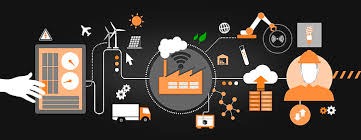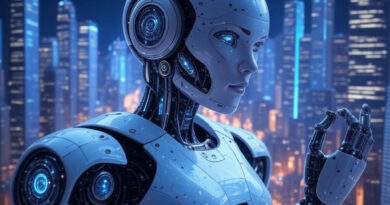How Automation Is Shaping—and Shaking—Creative Work
For centuries, creativity seemed untouchable. Something wild. Something human. You had your writers with pens, artists with brushes, musicians with instruments. Then along came computers—tools to help, not replace. Fast-forward to now, and it’s no longer just about help. It’s about doing. Automation is here, and it’s not standing quietly in the corner.
It’s inside writing apps. Design platforms. Music programs. It’s generating videos, fixing grammar, spitting out songs, creating marketing pitches in minutes. And all of that is leaving creatives with a lot to think about.

The Shift: From Tools to Creators
We used to call software a creative tool. Now, the software’s making decisions. Need a logo? Click. Done. Want background music for a podcast? Pick a vibe, press play. These aren’t just helpers anymore—they’re creators in their own right.
That’s the big change. Automation’s stepping into what used to be human-only territory. What once took hours in a studio or days at a desk can now happen in minutes, even seconds.
The appeal? It’s fast. It’s cheap. It works around the clock.
But there’s a quiet question behind all of it: If a machine can write the poem, compose the melody, edit the video—what’s left for people?
Writers, Designers, and Musicians Are Feeling It
Creative work is emotional. Personal. It’s full of little decisions that don’t always follow logic—like choosing a word because it feels right or picking a color that makes a brand feel softer.
When automation gets involved, it often misses those quiet, intuitive touches.
Still, it’s being used more and more. Writers now rely on AI to build outlines, generate copy, even brainstorm headlines. Graphic designers use AI to resize, retouch, and reimagine visual ideas. Musicians are experimenting with tools that generate beats or write harmonies.
For solo workers or small teams, it’s a game-changer. More done in less time. But for freelancers or creatives just starting out? It’s tough. Competing against instant, automated results can feel like trying to outrun a train.
Where It Helps
Automation’s best feature? Speed.
It takes over the repetitive stuff. Editing. Formatting. Spelling checks. Even basic drafts. That’s time saved.
For someone like Iris—a data analyst by day and creative by night—those time-saving tools matter. She can spend less time rearranging paragraphs and more time building characters or shaping scenes in her stories. That’s the goal: more time for real creative thinking.
There’s also an opening for people who aren’t professionally trained. You don’t need a degree to make music anymore. Or to publish a blog. Or to launch a brand. With the right tools, anyone can try. And that kind of access? Pretty powerful.
Where It Hurts
But speed has a cost.
Creative work isn’t just about what you make. It’s how you make it. The late nights, the rewrites, the hours staring at a canvas, waiting for something to click—that process builds depth. And machines skip it.
So what you get from automation often feels…flat. It might sound right. Look good. But something’s missing. That messy, imperfect touch that makes it feel alive.
And then there’s the pressure. Clients expect faster turnarounds. Lower prices. Because if a machine can do it instantly, why should they wait for you?
That leads to burnout. To creatives feeling like they’re always behind. Always catching up. Always having to prove why their work matters more than what a machine can do in a blink.
The Emotional Toll
One of the hardest parts? Identity.
People define themselves by their creative work. If you’ve always been the storyteller, the artist, the one who sees the world differently—what happens when a machine starts doing your thing?
There’s a deep kind of doubt that creeps in. Not just about income or competition, but about purpose.
And yet, this is also where the answer starts to show itself.
Because the best work? It still needs heart. Real experiences. Pain. Joy. Laughter. Loss. A machine can simulate tone. It can learn structure. But it can’t grieve. Or fall in love. Or grow up in a broken home and write a song about it.
People like Iris—quiet, thoughtful, reflective—know that her words matter not because they’re technically correct, but because they come from somewhere true. No shortcut can copy that.
What’s Next?
Automation isn’t going away. If anything, it’s going to be woven deeper into creative workflows. What that means is creatives have a choice:
Ignore it. Fight it. Or work with it.
The last one seems most likely to win out. Collaboration, not competition. Using tools to sketch ideas, organize thoughts, test concepts. Then jumping in with the human touch. The soul. The story.
Creatives who learn how to blend their skill with smart tools will have a huge advantage. They’ll move faster, think bigger, and reach farther.
But it will always come back to the heart of the work.
Machines don’t dream. They don’t wonder. They don’t cry when they write about loss or smile when a phrase just fits. They can copy all the signals of emotion—but not the feeling itself.
And that, in the end, is what creative work is. Feeling, shaped into something you can see or hear or hold.
Final Thoughts
Automation’s changing the game. No question.
Some jobs will shift. Some will fade. New ones will show up. But creativity? That’s not going away.
It’s just getting a new canvas. A new set of brushes. The ones who embrace that, without losing their own voice, will keep creating things that matter.
Because machines can make content. But people make meaning.




